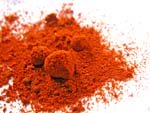Who are the Hungarian Nobel Prize winners?Here I will introduce you to those scientists and authors of whom all Hungarians are proud of. These people have done such a great job during their life that they were entitled to receive the Nobel Prize.
Alfred Nobel's will
The said interest shall be divided into five equal parts, which shall be apportioned as follows: - one part to the person who shall have made the most important discovery or invention within the field of physics; - one part to the person who shall have made the most important chemical discovery or improvement; - one part to the person who shall have made the most important discovery within the domain of physiology or medicine; - one part to the person who shall have produced in the field of literature the most outstanding work of an idealistic tendency; and - one part to the person who shall have done the most or the best work for fraternity among nations, for the abolition or reduction of standing armies and for the holding and promotion of peace congresses." What have these famous Hungarians done?I have listed here the Nobel Prize winners in chronological order. Philipp Lénárd - 1905, Nobel Prize in Physics
In 1905, he received the Prize in Physics for his work on cathode rays. Róbert Bárány - 1914, Nobel Prize in Physiology
He won the Nobel Prize for his work concerning the physiology and pathology of the vestibular apparatus. Bárány graduated from the medical school of the Vienna University in 1900, followed by studies in internal medicine and psychiatry. In 1905, he began working at an otology clinic, where he became associate professor in 1909. He realized that when rinsing the ear, the temperature of the water affected the patient's sense of vertigo and involuntary eye movements, and that the so-called Bárány caloric reaction was missing in certain pathological cases. This observation allowed the diagnosis of changes of the vestibular apparatus in the inner ear. Bárány was also responsible for the so-called "pointing test", which assisted in identifying the nature of various cerebral illnesses. Richárd Zsigmondy - 1925, Nobel Prize in Chemistry
He began experimenting as a child in the laboratory of his parent's house, which he built with the help of his dentist and inventor father. He later established a number of private laboratories, for examples in Jena, where he worked as a scientific consultant at the famous Schott glass factory. He won the Nobel Prize "for his demonstration of the heterogeneous nature of colloid solutions and for the methods he used." He decided to use the funds gained with the prize for the development of the University of Göttingen. Albert Szent-Györgyi - 1937, Nobel Prize in Medicine
Following the peace treaty of Trianon, he continued his work at Dutch, German, English and American universities, ending up at the University of Szeged between 1930-45. His studies focused on biological combustion; he also discovered vitamin C and its effect. The ascorbic acid required for his experiments was taken from the green peppers of Szeged, allowing him to cure scorbutic guinea pigs. He won the Nobel Prize in Physiology and medicine in 1937 "for his discoveries in connection with the biological combustion processes, with special reference to vitamin C and the catalysis of fumaric acid." Albert Szent-Györgyi was the most famous natural-historian in Hungary. Apart from winning the Nobel Prize, his popularity was also due to his progressive mindset and deep humanism. George de Hevesy - 1943, Nobel Prize in Chemistry
Nevertheless, he was more interested in chemistry, so he sought out a teaching position in Zurich alongside Richard Lorenz, then in 1911 he joined the laboratory of Rutherford in Manchester, where the world-famous scientist gave him the task of distilling the Radium D component from a 100 kilo block of Radium lead. Hevesy realised that the substances were inseparable and that radioactive Radium D could be used as an indicator of lead. In Freiburg, he made a number of further achievements, for example testing the application of radioactive isotopes on plants and animals, which has resulted in an indispensable investigative process of medical science. George de Hevesy received the Prize in Chemistry for his work on the use of isotopes as tracers in 1943, after seven nominations. Georg von Békésy - 1961, Nobel Prize in Physiology
He began his work in the well-equipped Experimental Station of the Hungarian Post Office, focusing on refining the sound transmission of telephones, although he was more interested in the operation of the hearing mechanism - particularly the function of the cochlea. Békésy studied and described the function of this tiny organ. In the course of his work, he developed a new investigative method, using mirrors and dentist's drills and dissecting animal, as well as human skulls. In 1961 he was awarded the Nobel Prize in Physiology "for his discoveries of the physical mechanism of stimulation within the cochlea." Eugene (Jenõ) Wigner - 1963, Nobel Prize in Physics
From 1939, he participated in Roosevelt's atomic energy project. He played a key role in developing the atomic bomb, he was charged with leading the theoretical physics group as well as the construction and design of nuclear reactors. He won the Nobel Prize in 1963, sharing it with Maria Goeppert Mayer and J. H. D. Jensen "for his contributions to the theory of the atomic nucleus and the elementary particles, particularly through the discovery and application of fundamental symmetry principles. Dennis Gábor (Gábor Dénes) - 1971, Nobel Prize in Physics
He worked in Germany and Hungary and then settled in England in 1934, where he became a renowned researcher. Apart from his direct fields of expertise, he also dealt with communication studies. Dennis Gábor invented holography in 1947, yet the significance of his invention only became widely renowned after the invention of the laser. In 1971, he won the Nobel Prize in Physics "for his invention and development of the holographic method." He was also socially active as a humanist thinker: in 1968, he participated in the establishment of the Club of Rome, whose declared goal is: "sharing the responsibilities for the future of humanity". John Harsányi - 1994, Nobel Prize in Economics
He was a co-recipient, together with John Nash and Reinhard Selten, of the 1994 Nobel Memorial Prize in Economics "for their pioneering analysis of equilibria in the theory of non-cooperative games". From 1961 he worked and lived in Berkeley. He became a member of a research group which assisted the USA's disarmament efforts: he analyzed a number of strategic scenarios in which the participants have only a limited knowledge of each other's intentions - a typical situation during Soviet-American negotiations. His theory is still utilized with great success in the field of economics; for example, allowing the USA to achieve ten times their previous profit in an auction of oil wells. As the assistant of Hertz at the University of Bonn, he studied the absorption and ionizing effect of cathode rays. In 1893, he constructed a cathode ray tube named after him, which became one of the most useful devices for inventive minds. He worked at a number of German universities while studying the way electrons pass through substances, devising the dynamid theory. According to this theory, only a small portion of the atom, the so-called dynamid - an intensive field - is impassable. This served as the basis of Rutherford's atomic model. György Oláh - 1994, Nobel Prize in Chemistry
Following the revolution of 1956, he left the country and settled in the United States of America. In 1994, he received the Nobel Prize in Chemistry "for his contributions to carbocation chemistry". He is to thank for lead-free petrol as well as being indirectly responsible for hydrocarbons. He developed the so-called direct methanol fuel cell, which provides an answer to the problems of global warming and limited energy supplies. Imre Kertész - 2002, Nobel Prize in Literature
He was born in 1929 in Budapest. He was deported to Germany at fourteen years of age. His experiences in the concentration camps of Auschwitz and Buchenwald serve as the basis for his novel entitled Fatelessness, which was awarded with the Prize in 2002, "for writing that upholds the fragile experience of the individual against the barbaric arbitrariness of history". The main character of the novel is a young boy, who reaches adulthood in a Nazi death camp, and who is later unable to return to his previous life. However, Fatelessness is only stylistically an autobiographical work. Its objective nature is perhaps its greatest merit, providing a new approach to the subject matter of the Holocaust.
Back to the top of this Hungarian Nobel Prize Winners page
|
||
|
[?] Subscribe To This Site
|
||
|
|
||
|
Copyright© 2009.
Best-Things-In-Hungary
|
||
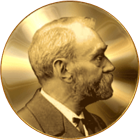 "The whole of my remaining realizable estate shall be dealt with in the following way: the capital shall be invested by my executors in safe securities and shall constitute a fund, the interest on which shall be annually distributed in the form of prizes to those who, during the preceding year, shall have conferred the greatest benefit on mankind.
"The whole of my remaining realizable estate shall be dealt with in the following way: the capital shall be invested by my executors in safe securities and shall constitute a fund, the interest on which shall be annually distributed in the form of prizes to those who, during the preceding year, shall have conferred the greatest benefit on mankind.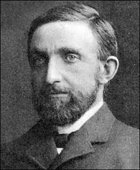 Philipp Lénárd gained his reputation under the name Philipp E A von Lenard, although he was born in Pressburg (Pozsony, that time belonged to Hungary) (1862) and began his university studies in Budapest, completing them in Germany, where he stayed for the rest of his life (until 1947).
Philipp Lénárd gained his reputation under the name Philipp E A von Lenard, although he was born in Pressburg (Pozsony, that time belonged to Hungary) (1862) and began his university studies in Budapest, completing them in Germany, where he stayed for the rest of his life (until 1947).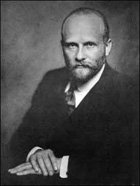 Although born in Vienna (1876), Róbert Bárány's Hungarian descent is unquestionable, and he still has relatives living in Hungary to this very day.
Although born in Vienna (1876), Róbert Bárány's Hungarian descent is unquestionable, and he still has relatives living in Hungary to this very day.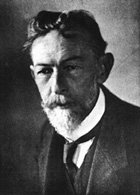 Richárd Zsigmondy's parents were Hungarian. Born in Vienna in 1865, he began his studies there and later moved to Germany, where he lived and worked until the end of his life (Göttingen, 1929).
Richárd Zsigmondy's parents were Hungarian. Born in Vienna in 1865, he began his studies there and later moved to Germany, where he lived and worked until the end of his life (Göttingen, 1929). 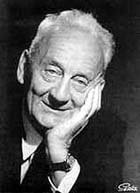 Szent-Györgyi was born in Budapest (1893) where he also received his degree, later serving twice in the army on the Italian front.
Szent-Györgyi was born in Budapest (1893) where he also received his degree, later serving twice in the army on the Italian front.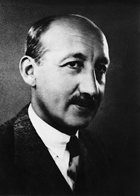 Born in Budapest in 1885, he later gained his PhD in physics from the University of Freiburg in 1908.
Born in Budapest in 1885, he later gained his PhD in physics from the University of Freiburg in 1908.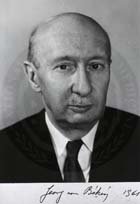 Although Georg von Békésy was a physicist, his discoveries were mainly utilized by medical science. In 1923, he received a PhD in physics in Budapest.
Although Georg von Békésy was a physicist, his discoveries were mainly utilized by medical science. In 1923, he received a PhD in physics in Budapest.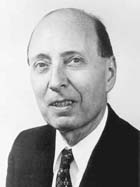 Eugene Wigner was born in Budapest in 1902. He continued his studies in Berlin. Here he met Albert Einstein and Leó Szilárd, whom he also befriended, gaining his degree in 1925, and as a colleague of the Kaiser Wilhelm Institute, realised that the symmetries of four-dimensional spacetime play a key role in quantum mechanics.
Eugene Wigner was born in Budapest in 1902. He continued his studies in Berlin. Here he met Albert Einstein and Leó Szilárd, whom he also befriended, gaining his degree in 1925, and as a colleague of the Kaiser Wilhelm Institute, realised that the symmetries of four-dimensional spacetime play a key role in quantum mechanics.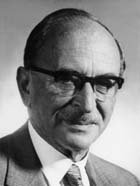 Dennis Gábor was born in Budapest in 1900. He began his studies as a technical engineer after the First World War, studying in Berlin at the electrical engineering faculty of the Technische Hochschule from 1920, where he later gained his degree.
Dennis Gábor was born in Budapest in 1900. He began his studies as a technical engineer after the First World War, studying in Berlin at the electrical engineering faculty of the Technische Hochschule from 1920, where he later gained his degree.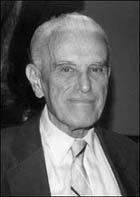 John Harsányi (1920-2000) was a Hungarian-American economist and a researcher into the incomplete information game theory.
John Harsányi (1920-2000) was a Hungarian-American economist and a researcher into the incomplete information game theory.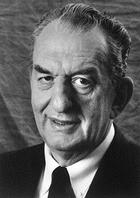 George Oláh was born in Budapest in 1927. After he left secondary school, he studied at the Budapest University of Technology. He became the head of the Department of Organic Chemistry, receiving a PhD in chemistry and shortly after becoming the Vice-President of the Central Chemical Research Centre of the Hungarian Academy of Science.
George Oláh was born in Budapest in 1927. After he left secondary school, he studied at the Budapest University of Technology. He became the head of the Department of Organic Chemistry, receiving a PhD in chemistry and shortly after becoming the Vice-President of the Central Chemical Research Centre of the Hungarian Academy of Science.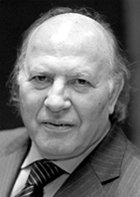 Hungarian writer and literary translator, Imre Kertész is not only the first Hungarian to win a Nobel Prize in Hungarian writer and literary translator, Imre Kertész is not only the first Hungarian to win a Nobel Prize in literature, but also the first to gain such a prestigious award for work in his home country, written without a university degree.
Hungarian writer and literary translator, Imre Kertész is not only the first Hungarian to win a Nobel Prize in Hungarian writer and literary translator, Imre Kertész is not only the first Hungarian to win a Nobel Prize in literature, but also the first to gain such a prestigious award for work in his home country, written without a university degree.
